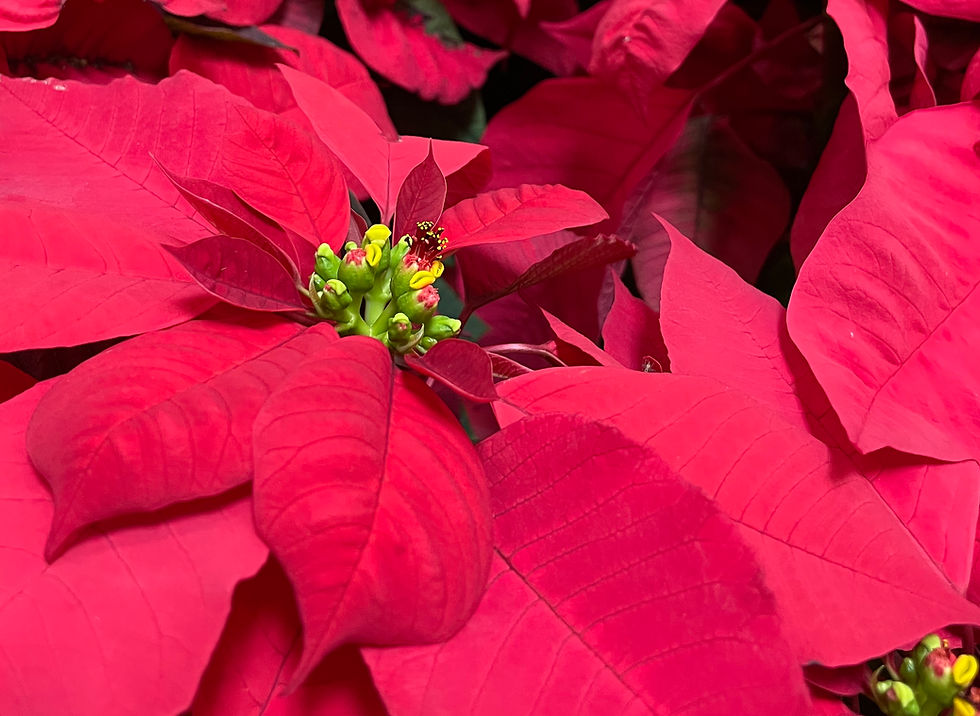Anita’s Blog – Odd Events; Startling Discoveries
- jjvanm
- Jun 9, 2022
- 4 min read
Updated: Jun 10, 2022
I’ve written several articles about moths, butterflies, their caterpillars, plants that feed them, and how important, especially this time of year, caterpillars are in the development of bringing up a brood of baby birds.
A recent visitor to the moth sheet/black light set up however, gives notice that the birds have caterpillar competition.
A rather large, bright green bug was basking in the glow of the UV lights on the moth sheet – something new to the yard, which is always exciting. The bug was identified via Bugguide.net and iNaturalist.org as Colosoma aurocinctum, a member of ground beetles in the Family Carabidae. It took some digging, no pun intended, to find a common name for this burrowing bug: gold-ringed caterpillar hunter.

A few pretty green beetles aren’t going to do much damage to my yard’s caterpillar complement, but in the whole scheme of things, there are lot of predators looking to devour caterpillars: lizards, opossums, owls, parasitic flies, wasps, assassin bugs, lacewings, spiders, frogs, toads, squirrels, deer – if caterpillars happen to be on the leaves where the deer is eating – even everybody’s favorite, the Ladybug, will consume a caterpillar.
Back to the shiny verdant beetle: the range of C. aurocinctum is southmost Texas to Nicaragua, according to information on bugguide.net; the species is occasionally found in numbers in the coastal brush east of Brownsville and has been documented in Cameron, Hidalgo, Starr and Nueces (Corpus Christi) counties, on www.iNaturalist.org. They are most likely found May to August.
The C. aurocinctum are a uniform metallic green color; the species name, aurocinctum, translates as gold girdled, and the beetle can have a purple or golden green border along the lateral margin of its elytra – the modified beetle-unique forewings located on the second thoracic segment that act as a hardened shield covering the dorsal (back) surface of the beetle, according to www.nature.com. Adults are nocturnal, ground-dwelling, capable of flight, slow runners and strong burrowers; they are attracted to lights at night.
Despite so many caterpillar enemies as I listed above, we’ve had legions of moths on the moth sheet, but surprisingly, not much variety. The moths are in the Rindgea genus, especially signate and mesquite looper moths (larval food is mesquite) and those identified as Rindgea nigricomma whose food host is Texas Huisache (Acacia smallii). The caterpillar-eating detail apparently having failed, the good news is the loopers are not on the TexasInvasives.org list, however prolific they seem. Hopefully many of the next generation of caterpillars will be consumed in the food chain.

In another recent bug happening, hundreds of tiny, hard-backed bugs came to the moth sheet when I had it propped against the resaca side of the house near the kitchen window. The first couple of nights was interesting as there were so many different shapes and sizes. Identified as seedcorn beetles, Genus Stenolophus, they are considered mostly beneficial: they feed on the eggs and small larva of many pest species in the soil. Seedcorn beetles have a worldwide range. When I noticed dozens of the beetles crawling on the kitchen floor, I moved the moth sheet away from the house.

In quite another startling event, this time across the resaca from the beetle and moth happenings, I caught a glance of the opposite shore of what looked like a couple of pythons, heads erect as if charmed by a flute. I grabbed the binoculars and saw the largest resaca turtles I’ve ever seen. They were identified by iNaturalist.org as spiny softshell turtles (Apalone spinifera).

The spiny softshell turtle is one of the largest freshwater turtle species in North America, according to a National Wildlife Federation education resource guide. They can be distinguished from other turtle species by their carapace (shell) which is soft, flat and rubbery. The edges are pliable with small spines; males have more than females.
An adult female’s carapace ranges from 7 to 21 inches in length, the male’s 5 to 10 inches; they can live more than 50 years. They mate in mid-to-late spring; the female lays from four to 38 eggs on sandbars or in loose soil. Eggs hatch sometime in August or September.

The turtle’s nose is long and piglike, and its feet are fully webbed. It spends most of its life in the water. They are diurnal and spend most of their day in the sun, foraging for food. In the water, they will eat almost anything that will fit into their mouth, aquatic insects, crayfish and the occasional fish. They will bury themselves under a layer of mud at the bottom of a lake, with only their head sticking out, and catch prey as it passes by.
They range throughout most of the United States, from central-eastern to Wisconsin and Minnesota and as far south as Mexico. Their habitat includes rivers, ponds, streams, lakes – and resacas – especially bodies of water with a sandy or muddy bottom and relatively little vegetation.
It's amazing how something that big can live nearly under my nose and escape my notice for so many years; those female turtles were probably living here long before we were.
Except for the turtles, I find it fascinating to know what goes on in the garden when the sun goes down, although I don't want to encounter a huge turtle while I'm checking the moth sheet. Hopefully, the literature is correct and they'll stay safely tucked into the mud during the night or content to keep to the opposite bank that provides a shoreline.





